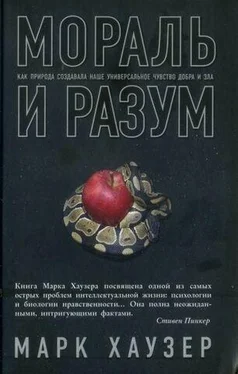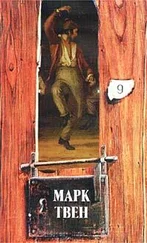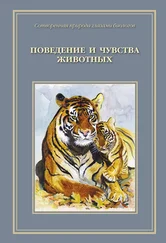Gaylin W. (2003). Hatred: The psychological descent into violence. New York: Public Affairs.
Gelman R. (1990). First principles organize attention to and learning about relevant data: number and the animate-inanimate distinction as examples // Cognitive Science, 14, 79—106.
Gelman S. A. (2003). The Essential Child: Origins of Essentialism in Everyday Thought. London: Oxford University Press.
Gentner T, Margoliasb D. & Nusshaum H. (in press). Recursive syntactic pattern learning in a songbird. Nature, still in press.
Gergely G. & Csihra G. (2003). Ideological reasoning in infancy: the naive theory of rational action // Trends in Cognitive Science, 7, 287—292.
Gergely G., Nadasdy Z, Csihra G. & Biro S. (1995). Taking the intentional stance at 12 months of age // Cognition, 56, 165—193.
Gert B. (1998). Morality: Its Nature and Justification. New York: Oxford University Press.
Gert B. (2004). Common Morality. New York: Oxford University Press.
Gibbon J., Church R. M., Fairhust S. & KacelnikA. (1988). Scalar expectancy theory and choice between delayed rewards // Psychological Review, 95, 102—114.
Gibbs J. C. (2003). Moral Development and Reality. Thousand Oaks, CA: Sage Publications.
Gilovich T, Griffin D. & Kabneman D. (2002). Heuristics and Biases: The psychology of intuitive judgment. Cambridge: Cambridge University Press.
Gintis H. (2000). Strong reciprocity and human sociality // Journal of Theoretical Biology, 206, 169—179.
Gintis H., Bowles S ., Boyd R. & Fehr E. (2003). Explaining altruistic behavior in humans // Evolution and Human Behavior, 24, 153—172.
Gintis H., Smith E. & Bowles S. (2001). Costly signaling and cooperation // Journal of Theoretical Biology, 213, 103—119.
Girotto V, Light P. & Colboum C. J. (1988). Pragmatic schemas and conditional reasoning in children // Quarterly Journal of Experimental Psychology, 40A, 469— 482.
Goldberg E. (2001). The Executive Brain. New York: Oxford University Press.
Golding W. (1999). Lord of the Flies. New York: Penguin Books.
Goldman A. (1971). The individuation of action // Journal of Philosophy, 68, 761— 774.
Goldman A. (1979). The paradox of punishment // Philosophy and Public Affairs, 9, 42—58.
Goldman A. (1989). Interpretation psychologized // Mind and Language, 4, 161 — 185.
Goldman A. (1992). In defense of the simulation theory // Mind and Language, 7, Ю4—119.
Gomez J.-C. (2005). Species comparative studies and cognitive development // Trends in Cognitive Science, 9, 118—125.
Gordon N. (2001). Honor killings: An editorial // Iris, 42 , http://iris.virginia.edu/archives/42/nonfiction.html.
Gordon P (2004). Numerical cognition without words: evidence from Amazonia // Science, 306, 496—499.
Gordon R. (1986). Folk psychology as simulation // Mind and Language, 1, 158— 171.
Gould J. L. (1990). Honeybee cognition // Cognition, 37, 83—103.
Greene J. D. (2003). From neural ‘is’ to moral ‘ought’: what are the moral implications of neuroscientific moral psychology // Nature Neuroscience Reviews, 4, 847—850.
Greene J. D., Nystrom L. E., Engell A. D., Darley J. M. & Cohen J. D. (2004). The neural bases of cognitive conflict and control in moral judgment // Neuron, 44, 389—400.
Greene J. D., Sommerville R. В ., Nystrom L. E., Darley J. M. & Cohen J. D. (2001). An fMRI investigation of emotional engagement in moral judgment // Science, 293,2105—2108.
Greenspan P. S. (1995). Practical Guilt. New York: Oxford University Press.
Griffiths P E. (1997). What Emotions Really Are. Chicago: University of Chicago Press.
Gyger M. & Marler P (1988). Food calling in the domestic fowl (Gallus gallus): the role of external referents and deception // Animal Behaviour, 36, 358—365.
Haidt J. (2001). The emotional dog and its rational tail: A social intuitionist approach to moral judgment // Psychological Review, 108 , 814—834.
Haidt J. (2003). The moral emotions // R. J. Davidson & K. R. Scherer & H. H. Goldsmith (Eds.), Handbook of Affective Sciences (p. 852—870). Oxford: Oxford University Press.
Haidt J. & Joseph C. (2004). Intuitive ethics: how innately prepared intuitions generate culturally variable virtues // Daedalus, 55—66.
Haidt /., McCauley C. R. & Rozin P (1994). Individual differences in sensitivity to disgust: a scale sampling seven domains of disgust elicitors // Personality and Individual Differences, 16, 701—713.
Hala S., Chandler M. & Fritz A. S. (1991). Fledgling theories of mind: deception as a marker of three year olds’ understanding of false belief // Child Development, 62, 83—97.
Hamilton W. D. (1964a). The evolution of altruistic behavior 11 American Naturalist, 97, 354—356.
Hamilton W. D. (1964b). The genetical evolution of social behavior // Journal of Theoretical Biology, 7, 1—52.
Harbaugh W. T, Krause K. & Liday S. (2003). Children’s bargaining behavior: differences by age, gender, and height. Working pages.
Harbaugh W T, Krause К, Liday S. & Vesterlund L. (2003). Trust in children // E. Ostrom & J. Walker (Eds.), Trust and Reciprocity (p. 302—322). New York: Russell Sage Foundation.
Harbaugh W. T, Krause K. & Vesterlund L. (2001). Risk attitudes of children and adults: choices over small and large probability gains and losses // Experimental Economics, 5(7), 53—84.
Hardin G. (1968). The tragedy of the commons // Science, 162 , 1243—1248.
Hare B. y Call ]. y Agnetta B. & Tomasello M. (2000). Chimpanzees know what conspecifics do and do not see // Animal Behaviour, 59, 771—785.
Hare B. y Call J. & Tomasello M. (2001). Do chimpanzees know what conspecifics know? // Animal Behaviour, 61, 139—151.
Hare B. y Plyusnina /., Ignacio N. y Scbepina O., StepikaA., Wrangbam R.W.&t Truth. N. (2005). Social cognitive evolution in captive foxes is a correlated byproduct of experimental domestication // Current Biology, 15(3), 226—230.
Hare B. & Tomasello M. (2004). Chimpanzees are more skilful in competitive than in cooperative cognitive tasks // Animal Behaviour, 68, 571—581.
Hare R. D. (1993). Without Conscience. New York: Guilford Press.
Hare R. M. (1981). Moral Thinking: Its levels, method, and point. Oxford: Clarendon Press.
Harman G. (1977). The Nature of Morality: An Introduction to Ethics. New York: Oxford University Press.
Harris R L. (2000). The Work of the Imagination. Oxford: Blackwell Publishers.
Harris P. L. & Nunez M. (1996). Understanding of permission rules by preschool children // Child Development, 67, 1572—1591.
Harris R. (1989). Murder and Madness: Medicine, Law and Society in the Fin de Siecle. Oxford: Clarendon Press.
Hart B. L. & Hart L. A. (1989). Reciprocal allogrooming in impala, Aepyceros melampus // Animal Behaviour, 44, 1073—1084.
Читать дальше











